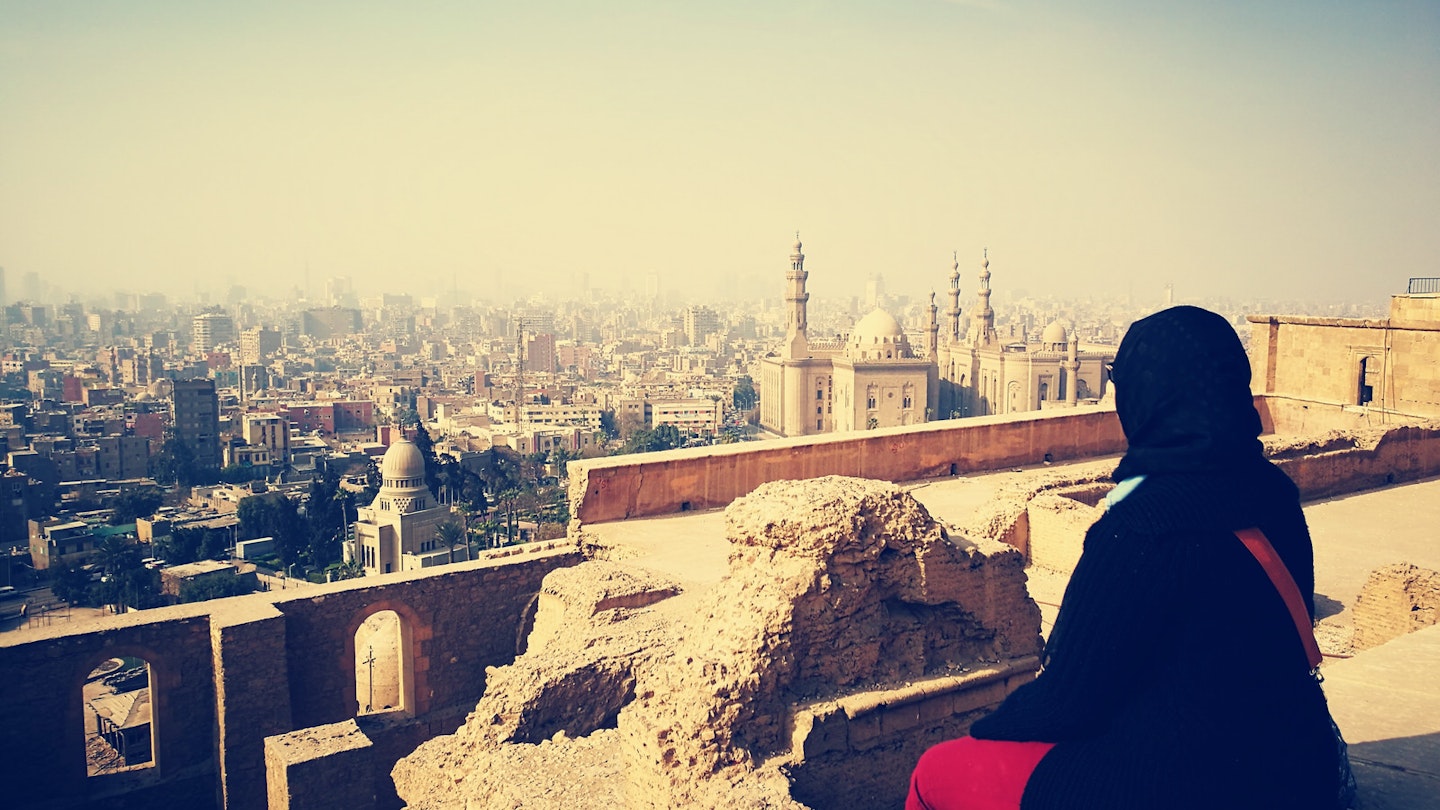Cairo’s iconic sights are among the world’s most famous; however, this city has more than Giza’s Pyramids and the cache of pharaonic riches inside the Egyptian Museum. From an ex-royal residence that outshines modern bling to a bijou Sufi dervish hall befitting a storybook, this megacity hides a host of eccentric spots that are delightfully off the beaten track.

The city’s past empire-builders bequeathed it a staggering abundance of medieval-era mosques and monuments, as well as even more ancient Coptic churches. Cairo’s less-vaunted curiosities – hidden behind bland walls and snaffled down narrow alleyways – offer a more intimate glimpse behind the curtain of this city’s past. As a further benefit, no tour buses ever bother to pull up at the entrances, and you may just be the sole visitor of the day.

Lavish Manial Palace
Want to see how the other half once lived? Make a beeline to Manial Palace on Roda Island. Once home to Prince Mohammed Ali, this extravagant Nile-side residence offers a peek into the lives of Egypt’s elite in the early 20th century. The prince, a passionate traveller, developed a sense of style that fuses Islamic design with regal French and British interior fashions, all thanks to a generous budget.
Inside, you’ll find elaborate panelled wood ceilings, intricate geometric designs, and lavish furnishings. Don’t miss the throne hall he constructed, filled with gaudy gold detailing, reflecting his hope of ascending to the throne.
A further detour on Roda Island…
Music and fashion enthusiasts should visit the Umm Kulthum Museum, dedicated to Egypt’s beloved singer. The exhibit showcases her stunning stage dresses and provides insight into her extraordinary life.

Secret Sufi Hall
Embark on an adventure through a grubby side street behind the Mosque-Madrassa of Sultan Hassan. Spot the sign for the Italian Institute above a nondescript door and enter the Museo Mevlevi, one of Cairo’s hidden architectural gems. This building dates back to the early 19th century, a period when the Mevlevi Sufi order had a strong presence in Egypt.
Inside, the circular sama khane (ritual hall) resembles a miniature wooden theatre, where Mevlevi Sufi dervishes twirled under a beautifully painted dome. Be sure to head upstairs to the upper arcade, where delicate frescoes provide a unique perspective on this building’s charming proportions.

While you’re in the area…
The Museo Mevlevi is conveniently located for those walking from the Mosque-Madrassa of Sultan Hassan to the Mosque of Ibn Tulun. Don’t miss the opportunity to explore the plethora of antiques and Islamic decorative arts at the Gayer-Anderson Museum in this vibrant district.

Modern Street Art Masterpiece
If you’re tired of dazzling ornamentation and antique splendour, head to the suburb of Manshiyet Nasr, a densely packed maze of narrow lanes. This area is predominantly home to Cairo’s garbage collectors and recyclers, often marginalized by broader Egyptian society. In 2016, the acclaimed street artist eL Seed transformed the buildings here into a vast canvas for the Perception Mural, celebrating this community’s vital role in maintaining Cairo’s infrastructure. The vibrant Arabic calligraphy unfurls across 50 buildings, forming a poignant quote by St Athanasius: ‘Anyone who wants to see the sunlight clearly needs to wipe his eyes first.’ Ascend the ridge to admire this modern addition to the panoramic view over the Islamic Cairo district.

If you’re on the Muqattam Hills…
The ridge upon the Muqattam Hills is home to a cluster of modern Coptic churches carved directly into the cliffs. The most prominent one, the Church of St Simeon the Tanner, is a vast rock-cut amphitheatre that can accommodate 17,000 worshippers, making it the largest church in the Middle East.

Rococo Gem
This place is not simply a splash of Rococo glitz; instead, the recently restored interiors of the Aisha Fahmy Palace in Zamalek take baroque to an entirely new level. Originally home to one of King Farouk’s army officials, Ali Fahmy (named after his daughter), the palace features interiors adorned with lacquerwork, silk-panelled walls, and elaborate frescoes.
As you ascend the wide central staircase, you’ll be greeted by a stunning stained glass window, leading to salons that exude opulence. Today, it operates as a cultural center, often hosting temporary art exhibitions. Visitors frequently find themselves marveling at the lavish decor rather than focusing on the exhibits themselves.

While in Zamalek…
If your eyes can still handle a bit more opulence, head across the road to the Cairo Marriott, a beautifully restored hotel that was once Khedive Ismail’s palace. You don’t need to stay here to explore the exquisite drawing rooms and grand ballroom, which still retain their historical charm.





